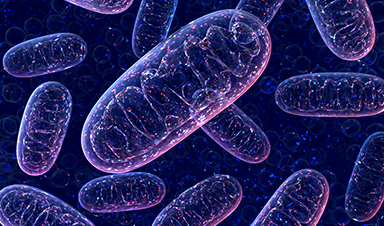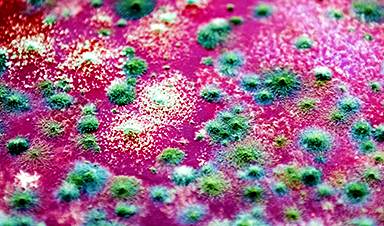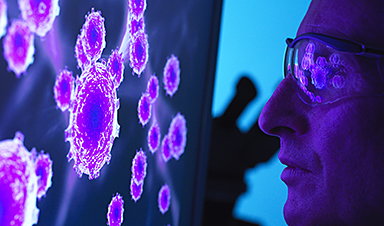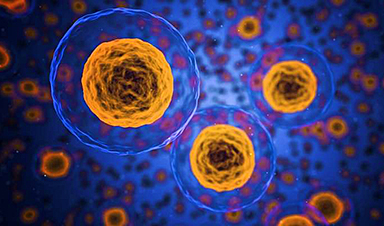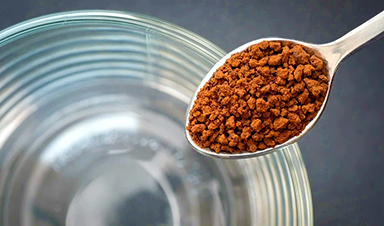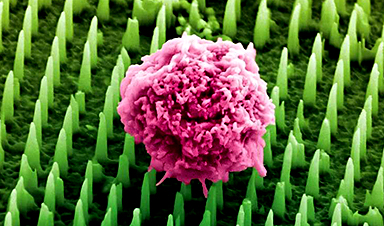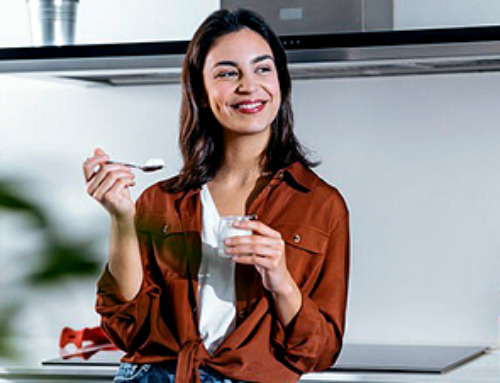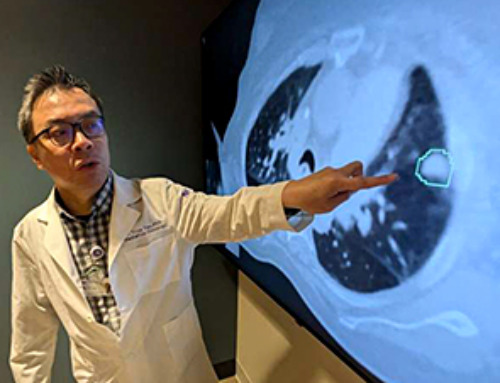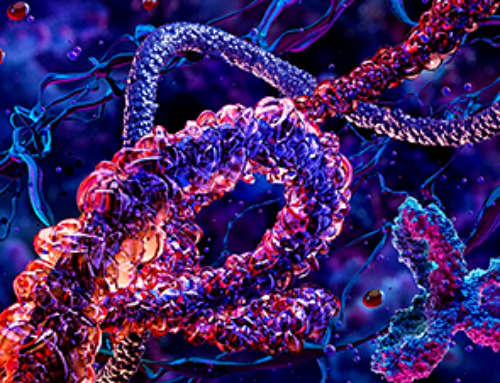Autoimmune diseases are widespread and notoriously difficult to treat. In part, this is because why the immune system attacks its own tissues in patients with these conditions remains poorly understood.
In a study recently published in Cell, researchers from Osaka University have revealed that the body’s own proteins with unusual structure trigger immune cells to unleash a wave of inflammation that leads to autoimmunity.
Autoimmune diseases develop when the body’s immune system mistakenly attacks its own tissues instead of fighting off foreign invaders like bacteria or viruses. However, it has long been a mystery why this happens, as the immune system has many checks and balances to make sure that it only reacts to ‘non-self’ triggers.
“T cells have been thought to discriminate between small fragments of protein derived from self and non-self proteins presented on the major histocompatibility complex II (MHC-II), and ‘trained’ not to respond self-antigens” explains senior author of the study Hisashi Arase.
However, when the MHC-II is missing a crucial piece called the invariant chain (Ii), it can present larger, misfolded self antigens, called neoself-antigens, to T cells.”
Hisashi Arase, Osaka University
Given that autoantibodies to neoself-antigens are frequently found in patients with autoimmune diseases, the researchers explored T cell reactivity in patients with lupus and in mice, in which Ii was depleted from adult. They also investigated the effect of Epstein–Barr virus (EBV) infection, a risk factor for lupus, on T cell reactivity to neoself-antigens.
“The results were striking,” says Shunsuke Mori, lead author. “We found that approximately 10% of clonally expanded T cell repertoire in lupus patients recognized neoself-antigens. Furthermore, induction of neoself-antigens induced lupus-like disease in mice, meaning that they mounted an immune response to the body’s own tissues, thereby causing autoimmune disease.”
Furthermore, the researchers found that reactivation of EBV, which most people are infected with but is usually dormant, increases the presentation of neoself-antigens on MHC-II through downregulating the expression of Ii, triggering the activation of T cells directed against the body. This could explain why EBV reactivation is linked to the onset or exacerbation of lupus.
“Our findings demonstrate that T cells discriminate self- and neoself-antigens and do not recognize neoself-antigens as self antigens, thus leading to the development of autoimmunity when neoself-antigens are presented on MHC-II,” says Arase.
This study substantially increases our understanding of self-tolerance of T cells as well as the causes of autoimmune disease by identifying neoself-antigens as a distinct class of antigens that trigger an inappropriate immune response. This insight into why the body begins to attack itself could help develop new treatments for autoimmune disorders like lupus.
Mori, S., et al. (2024) Neoself-antigens are the primary target for autoreactive T cells in human lupus. Cell. doi.org/10.1016/j.cell.2024.08.025.
News
Scientists discover cancer-fighting bacteria that ‘soak up’ forever chemicals in the body
A family of healthy bacteria may help 'soak up' toxic forever chemicals in the body, warding off their cancerous effects. Forever chemicals, also known as PFAS (per- and polyfluoroalkyl substances), are toxic chemicals that [...]
Johns Hopkins Researchers Uncover a New Way To Kill Cancer Cells
A new study reveals that blocking ribosomal RNA production rewires cancer cell behavior and could help treat genetically unstable tumors. Researchers at the Johns Hopkins Kimmel Cancer Center and the Department of Radiation Oncology and Molecular [...]
AI matches doctors in mapping lung tumors for radiation therapy
In radiation therapy, precision can save lives. Oncologists must carefully map the size and location of a tumor before delivering high-dose radiation to destroy cancer cells while sparing healthy tissue. But this process, called [...]
Scientists Finally “See” Key Protein That Controls Inflammation
Researchers used advanced microscopy to uncover important protein structures. For the first time, two important protein structures in the human body are being visualized, thanks in part to cutting-edge technology at the University of [...]
AI tool detects 9 types of dementia from a single brain scan
Mayo Clinic researchers have developed a new artificial intelligence (AI) tool that helps clinicians identify brain activity patterns linked to nine types of dementia, including Alzheimer's disease, using a single, widely available scan—a transformative [...]
Is plastic packaging putting more than just food on your plate?
New research reveals that common food packaging and utensils can shed microscopic plastics into our food, prompting urgent calls for stricter testing and updated regulations to protect public health. Beyond microplastics: The analysis intentionally [...]
Aging Spreads Through the Bloodstream
Summary: New research reveals that aging isn’t just a local cellular process—it can spread throughout the body via the bloodstream. A redox-sensitive protein called ReHMGB1, secreted by senescent cells, was found to trigger aging features [...]
AI and nanomedicine find rare biomarkers for prostrate cancer and atherosclerosis
Imagine a stadium packed with 75,000 fans, all wearing green and white jerseys—except one person in a solid green shirt. Finding that person would be tough. That's how hard it is for scientists to [...]
Are Pesticides Breeding the Next Pandemic? Experts Warn of Fungal Superbugs
Fungicides used in agriculture have been linked to an increase in resistance to antifungal drugs in both humans and animals. Fungal infections are on the rise, and two UC Davis infectious disease experts, Dr. George Thompson [...]
Scientists Crack the 500-Million-Year-Old Code That Controls Your Immune System
A collaborative team from Penn Medicine and Penn Engineering has uncovered the mathematical principles behind a 500-million-year-old protein network that determines whether foreign materials are recognized as friend or foe. How does your body [...]
Team discovers how tiny parts of cells stay organized, new insights for blocking cancer growth
A team of international researchers led by scientists at City of Hope provides the most thorough account yet of an elusive target for cancer treatment. Published in Science Advances, the study suggests a complex signaling [...]
Nanomaterials in Ophthalmology: A Review
Eye diseases are becoming more common. In 2020, over 250 million people had mild vision problems, and 295 million experienced moderate to severe ocular conditions. In response, researchers are turning to nanotechnology and nanomaterials—tools that are transforming [...]
Natural Plant Extract Removes up to 90% of Microplastics From Water
Researchers found that natural polymers derived from okra and fenugreek are highly effective at removing microplastics from water. The same sticky substances that make okra slimy and give fenugreek its gel-like texture could help [...]
Instant coffee may damage your eyes, genetic study finds
A new genetic study shows that just one extra cup of instant coffee a day could significantly increase your risk of developing dry AMD, shedding fresh light on how our daily beverage choices may [...]
Nanoneedle patch offers painless alternative to traditional cancer biopsies
A patch containing tens of millions of microscopic nanoneedles could soon replace traditional biopsies, scientists have found. The patch offers a painless and less invasive alternative for millions of patients worldwide who undergo biopsies [...]
Small antibodies provide broad protection against SARS coronaviruses
Scientists have discovered a unique class of small antibodies that are strongly protective against a wide range of SARS coronaviruses, including SARS-CoV-1 and numerous early and recent SARS-CoV-2 variants. The unique antibodies target an [...]
